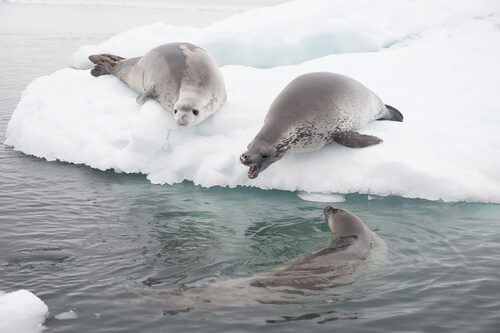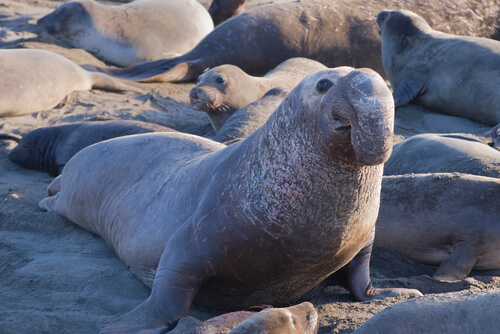Hundreds of different species of aquatic mammals live in the seas and oceans. Some of them, such as seals and sea lions, can be seen out of the water, where they perform some of their vital functions, such as reproduction. This always occurs on land, with the exception of some species, which can give birth in water, such as the Mediterranean monk seal. In addition, other aquatic animals such as whales or dolphins, are never on land and, if accidentally, end up stranded on the banks, die soon after.
Seals and sea lions (or lions) are classified phylogenetically within the same superfamily, the pinnipeds. However, this does not mean that they are all seals.
The seals belong to the family of the focids, while the sea lions to that of the otarids. And while it is true that these Animals have many common characteristics, because their lifestyle is quite similar, it is not correct to group them all with the label “seals.”
How are seals and sea lions similar?
Seals and sea lions have much in common. The pressures of the environment in which they live have caused them to evolve adopting characteristics that have benefited both groups of animals.
First lIn addition, the body of pinniped animals is fusiform – spindle-shaped – and elongated. ANDThis allows them to swim at high speed, something necessary to get food. All species are carnivorous and, although they can vary in the type of preferred food, they usually eat mollusks, crustaceans, fish and even penguins.
Second, the eyes of seals and sea lions are adapted to marine life. On the one hand, they lack the nasolacrimal duct, which in terrestrial mammals iThey prevent tears from continuously running through the eyelids. On the other, they suffer astigmatism when they are out of the water. That is to say, underwater they see correctly but, outside it, their vision is not perfect.
Third, these mammals, like everyone else, have hair. However, this is little Dense in most species. What really protects them from external temperature changes, is a thick layer of adipose tissue that they possess under the skin.
By last, Both groups of animals have a whole respiratory system adapted to the high pressures that occur underwater. In addition, they are able to endure a lot without taking new air.
How to differentiate a seal from a sea lion?

At first glance, there are few characteristics that differentiate seals and sea lions. For example, after genetic studies, we now know that seals have 34 chromosomes, compared to 36 that have sea lions. Maybe, this may be related with the three different physical characteristics that are easily detectable in these animals.
On the one hand, the seals have no auditory pavilion, that is, they have no ears. This does not mean that they are deaf, since they do have an ear canal and other parts of the system that allows hearing. Sea lions, on the other hand, do have auditory pavilions.
With respect to their limbs, both groups have four legs in the form of fins that facilitate swimming. Nevertheless, in the case of seals, the hind legs are directed backwards, therefore, they are very clumsy animals on the earth’s surface.Sea lions have their hind limbs facing forward, this greatly facilitates their locomotion on the mainland.
From the behavioral point of view, each species has its defined ethology. However, in general, sea lions are gregarious animals They live in large groups and, in addition, they can be seen easily. Conversely, seals are solitary animals or live in small groups, they are usually shy animals that prefer the protection of the ocean to exposure that involves being on the mainland.
Finally, as a curiosity we will tell you the names of some seals and sea lions.
Seals
- Ross seal (Ommatophoca rossii)
- Crab Seal (Lobodon carcinophagus)
- Leopard Seal (Hydrurga leptonyx)
- Weddell seal (Leptonychotes weddellii)
- Southern Elephant (Mirounga leonina)
- Hawaiian monk seal (Neomonachus schauinslandi)
- Mediterranean monk seal (Monachus monachus)
- Northern Elephant (Mirounga angustirostris)

Some species of sea lions
- Arctic sea bear (Callorhinus ursinus)
- Steller’s sea lion (Eumetopias jubatus)
- Australian sea lion (Neophoca cinerea)
- Patagonia Otario (Otaria flavescens)
- California Otario (Zalophus californianus)
- Tropical sea lion (Arctophoca tropicalis)
- Southeast sea lion (Arctocephalus pusillus)
- Sea lion with two hairs (Arctophoca australis australis
